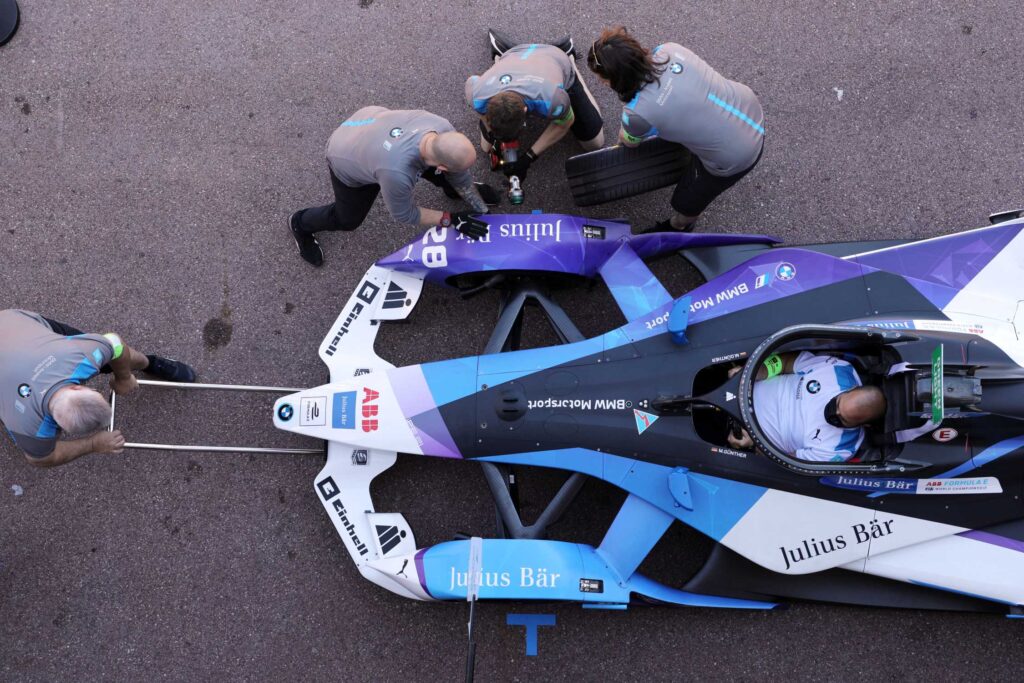
Audience
- Sentiment: Positive
- Political Group: Environmentally-conscious group
- Age Group: 18-34 years old
- Gender: Male
Overview
- Formula E introduces new Pit Boost technology to enhance race performance.
- The technology allows for a temporary 10% energy increase, introducing strategic dynamics in racing.
- Challenges surrounding the implementation of Pit Boost include battery performance and race track complexities.
Powering Up: Formula E’s Exciting New Pit Boost Technology
This week, the buzz of excitement surrounds Formula E as it rolls out its brand-new Pit Boost technology. Imagine being in a race car, feeling the energy surge through your vehicle like a wave. That’s what Pit Boost promises for the drivers in the all-electric racing series that has been captivating motorsport fans around the world. But like any new technology, it comes with its own set of challenges and questions—especially in this week’s inaugural race at the stunning Jeddah track in Saudi Arabia.
What is Formula E?
Before diving into all the thrilling details about Pit Boost, let’s take a step back and understand what Formula E is all about. Formula E is a racing series that features fully electric cars competing on city streets around the globe. Unlike traditional racing, where gas-guzzling engines roar and smoke fills the air, Formula E showcases quiet, yet powerful electric race cars, promoting sustainability and clean energy.
Since its inception in 2014, Formula E has worked to prove that electric vehicles can be just as exciting and competitive as their gas-powered counterparts. In recent years, the series has been gaining traction, attracting some of the best drivers and teams from other motorsport disciplines. As the series continues to grow and evolve, so does the technology behind it.
What is Pit Boost?
Now, onto the main event—Pit Boost technology! This week’s race marks the first time this innovative system will be tested during actual competition. Imagine it’s the final lap of a video game race, and you hit a power-up that gives you extra speed. Pit Boost is similar! It allows drivers to access a temporary energy increase of 10% during the race, which can provide a much-needed advantage in head-to-head situations.
However, implementing such a high-tech feature in a live race setting isn’t as simple as flipping a switch. This new system has faced delays and numerous questions from teams and drivers alike. After all, it’s still relatively untested, and incorporating it amid the adrenaline-fueled environment of a live race introduces a level of uncertainty.
The Challenges of New Tech
Jumping into a new technology during a high-stakes event like the Saudi Arabia race isn’t without its risks. For starters, teams are still figuring out how Pit Boost will affect battery performance and temperature consistency. Electric vehicles rely heavily on their battery systems, and any unexpected changes could have significant implications for performance.
On top of that, Jeddah is a new track for many racers, with unique characteristics that can change the way drivers approach the race. The track itself will test each racer’s skills as they learn to navigate its twists and turns while managing their energy consumption and grip levels. Combining these factors—new tech, new track layout—creates an unpredictable recipe for the teams and drivers.
The Race Dynamics
One of the most intriguing aspects of introducing Pit Boost is how it will affect race dynamics, especially during critical moments. For instance, if a safety car is deployed, the race can resume in a packed situation where drivers must make tactical decisions that can dramatically impact their positions on the track. A safety car usually means fewer opportunities for drivers to pit safely without losing crucial time.
During these moments, using Pit Boost can make or break a racer’s strategy. Imagine watching the race, and suddenly a car in front of your favorite driver boosts up, zooming past with a surge of energy. Wouldn’t that be thrilling? However, it can also lead to overly aggressive driving styles, as teams scramble to take full advantage of the new system.
Pit Stop Rules and Strategies
In Formula E, pit stops are always an intense part of the race. There are specific rules that teams must follow, such as the prohibition against double-stacking cars from the same team. Double-stacking means having two cars from the same team in the pit at the same time, which can lead to significant delays if not choreographed perfectly. As teams adapt to the new Pit Boost protocols, they will need to develop clever strategies on timing their pit stops to avoid these penalties while still maximizing the benefits of the energy boost.
Tire changes are another critical aspect to consider during these stops. Depending on the track conditions and team strategy, the need for fresh tires can play a pivotal role. However, increasing energy levels during a pit stop could lead to friction between teams trying to find the best time to switch tires while using the Pit Boost effectively.
The Waiting Game
Despite the excitement surrounding Pit Boost, there’s no denying that a cloud of uncertainty hangs above this debut. Teams are optimistic, but that’s not enough to wipe away doubts. How reliable will this new technology be? Will there be any hiccups in the execution of pit stops with the added chaos of the energy boost? The concerns are numerous: In a world where every millisecond counts, drivers will be holding their breath the moment they hit that pit lane.
When technology meets uncertainty, innovation doesn’t always follow a straight line. This dynamic of anticipation and apprehension is what makes racing exciting and unpredictable. Each race provides teams with valuable data and experiences that they can analyze and tweak for future events.
A Milestone for Formula E
The introduction of Pit Boost technology is undeniably a milestone for Formula E. It represents a blend of tradition and tomorrow—the rush of motorsport wrapped up in cutting-edge tech. While it may present various challenges, hurdles can drive innovation, camaraderie, and creativity amidst competition.
Whether or not this debut goes as smoothly as everyone hopes, it’s essential to remember that every new venture has its ups and downs. What truly matters is how the teams, drivers, and fans rally around this change, sharing insights, experiences, and perhaps even a few laughs along the way.
Your Take
As we watch this season unfold, filled with new technologies, exciting races, and tons of unexpected twists, I want to hear from you! What are your thoughts on Formula E’s new Pit Boost technology? Do you believe it can change the landscape of racing, or are you skeptical about how it will perform during the races? Register your thoughts in the comments below—let’s kick off a discussion!




